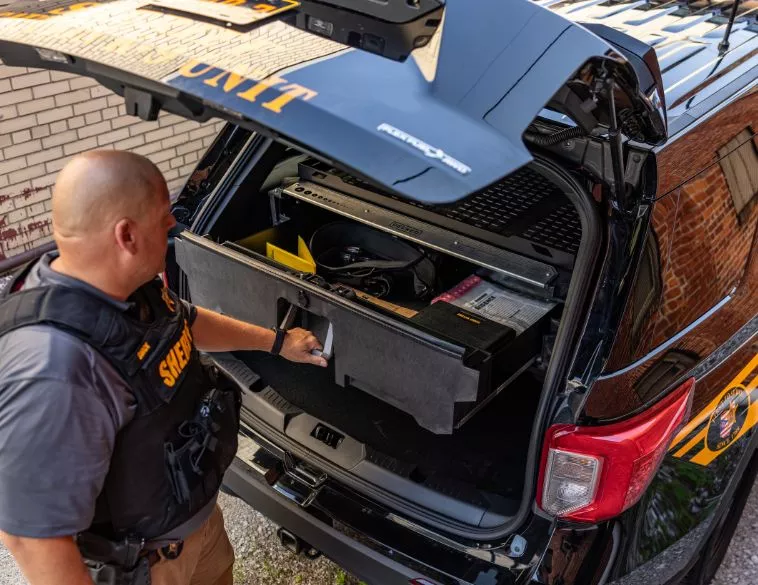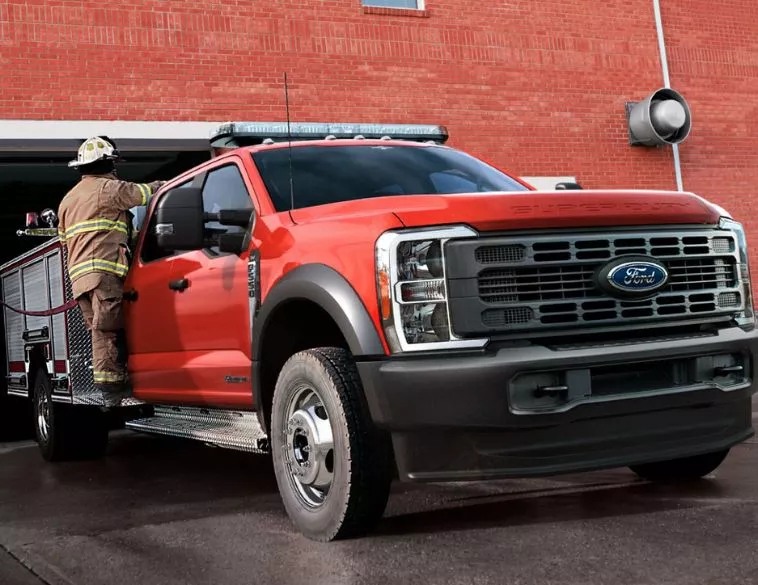Emergency EVs
Police, ambulance, fire—here’s where EVs and hybrids make sense.

Although we’ve all become used to seeing hybrid and electric vehicles on public roads, the idea of electrified emergency vehicles may still seem like a futuristic fantasy and an overly-ambitious goal. After all, what if an electric police car, ambulance or fire truck were to run out of battery power while responding to an emergency?
To that question, Joe Korn, Sustainability Consultant at Holman provides the following answer: “It can be done, and some fleets are doing it already.”
That said, Korn is quick to point out that electrified emergency vehicles are not the right choice for all applications. In other words, he’s not recommending electrifying all emergency vehicles, although in some cases, “they’re a great fit,” he adds.
Police vehicles
For starters, Korn says that many police vehicles should be hybrid, if not completely electric, “just as long as we’re not talking about high-speed pursuit vehicles,” he adds.
The reason why some fleets hesitate to invest in electrified emergency vehicles, Korn explains, is because of the age old excuse: We always did it this way. “It’s a matter of mindset,” he adds. “Fleet managers often think about everything that may or may not happen with the vehicle, and a lot of times they make emotional decisions about first responder vehicles, especially when it comes to police vehicles.”
Korn says that he’s seen electric vehicles like the Tesla Model Y, the Ford Mach-E and the Chevrolet Blazer EV used as police vehicles. In fact, the all-electric Chevrolet Blazer EV PPV (Police Pursuit Vehicle) boasts a range of over 465 km and a top speed of 208 km/hr, which makes it ideal for many law enforcement applications.
For those concerned about all the auxiliary equipment that emergency vehicles need to power, including lights, sirens, computers and the like, Korn says there’s no need to worry anymore.
“Years ago, a lot of the lights and other equipment were heavy power consumers,” he explains. “You needed big alternators on these vehicles, and you had to keep the engines running so they could generate enough power. Now, we’re using LEDs, which don’t need a lot of power.”
Electric ambulance
For many fleet managers, making the jump from ICE to EV may seem too ambitious. Instead, they might see hybrid emergency vehicles as a stepping stone to full electrification. However, Korn says that although that might sound like a logical strategy, it’s not always an option. When it comes to ambulances, he explains, “manufacturers don’t make hybrid systems in the classes of vehicles you would need for an ambulance.”
While hybrid medium-duty trucks may be impossible to find, Korn says that quite a few manufacturers are already making electric medium-duty trucks, which means there’s more to choose from when fleet managers are shopping for an electric chassis that can be upfitted to serve as an ambulance.
“We’re actually working with a healthcare provider in a hospital system,” Korn says. “They came to us looking for recommendations for their ambulances, and when it comes to local pickup and delivery type applications where they’re picking up patients and bringing them to the hospital, or transporting patients between facilities for testing, an electric ambulance could work for them.”
Electric fire trucks
While electric fire trucks are used in certain applications, they’re not a viable solution for all fleets. “Airports are prime candidates for electric fire trucks,” Korn explains. “We haven’t seen widespread adoption, and it is much more expensive and complicated to [electrify] a fire truck, but some airports have invested in them already.”
A key concern is that fire trucks may have to run a lot of equipment, which makes electrification a less viable option. A municipal pumper truck, for instance, might need enough energy to pump thousands of gallons of water, and run for many hours at a time. In this case, an electric truck would not be your best option, because it would run out of power long before it was able to put out the fire.
Korn warns that just because something can be done, doesn't mean that it should be done. Each fleet manager must look at the way his emergency vehicles are used to determine where electrification makes sense, and where conventional ICE vehicles are the better option.
It’s also critical to count the costs, look at the initial investment, see how much an electrified vehicle might save in maintenance, how much a fleet would have to invest in charging infrastructure, and how much they might get in government grants, if they’re available. Once all the numbers are tallied, a fleet manager can then decide if electrification makes sense for their fleet needs.
Best practices
If you’re not sure whether electrification might make sense for your emergency fleet, Korn offers a few rules of thumb to consider. For starters, he stresses that electrified emergency vehicles are more viable in urban settings, and not practical in rural areas where they have to drive especially long distances and where charging infrastructure is not available.
As far as charging stations, Korn recommends investing in Level 2 chargers for your locations, since they’re more cost-effective than DC fast chargers. In turn, this means that fleet mangers should factor in charging times, which could take anywhere from eight to 12 hours with a Level 2 charger, depending on the charger selected and the capacity of the battery.
With those charging times in mind, if your fleet is going to be used to respond to emergencies, then electrification may not be the best option. On the other hand, if an ambulance, for example, is used to transport patients to appointments, and has a more predictable daily route, then charging times can be worked into each vehicle’s daily schedule.
In short, Korn says that if he were to advise a fleet customer who is considering electrifying an emergency fleet, he wouldn’t recommend electrifying a fire truck, but he would consider electrifying an ambulance (depending on the application), and he would recommend electrified police vehicles.






